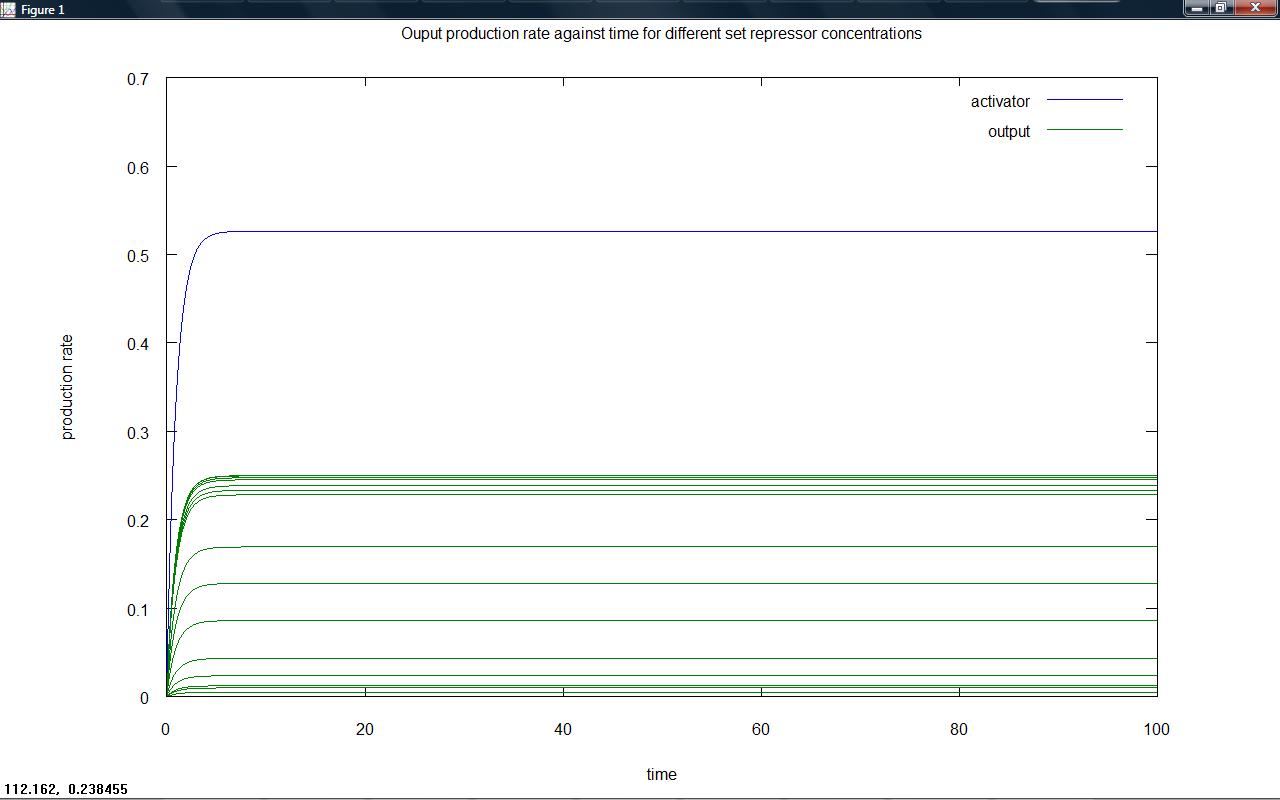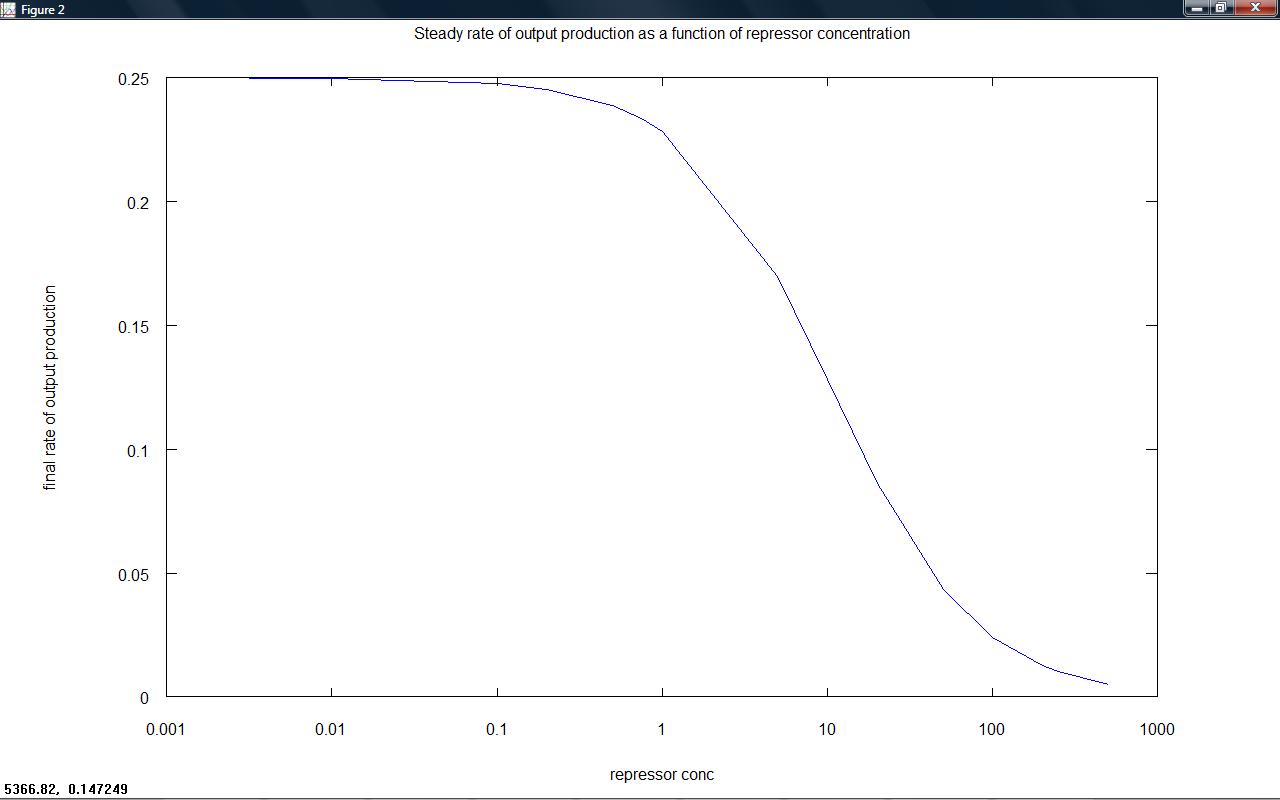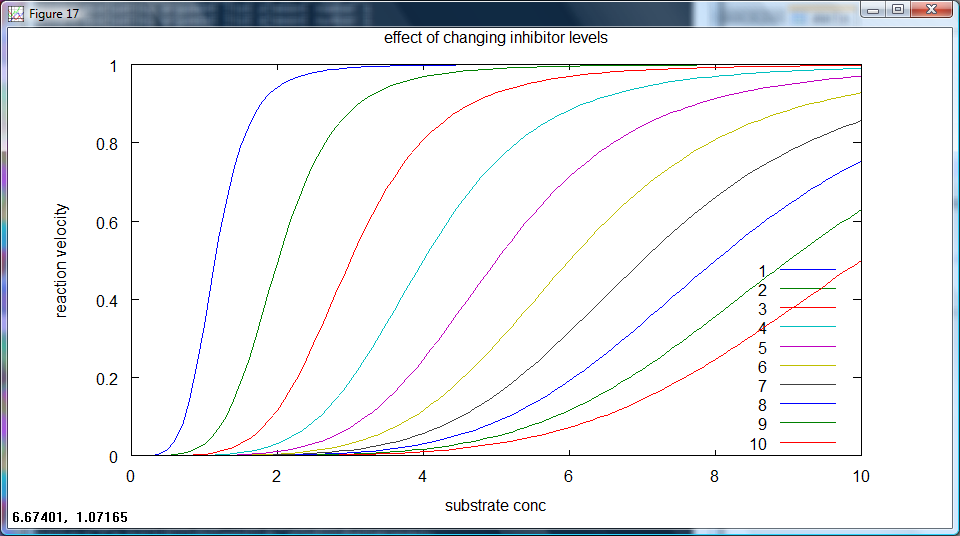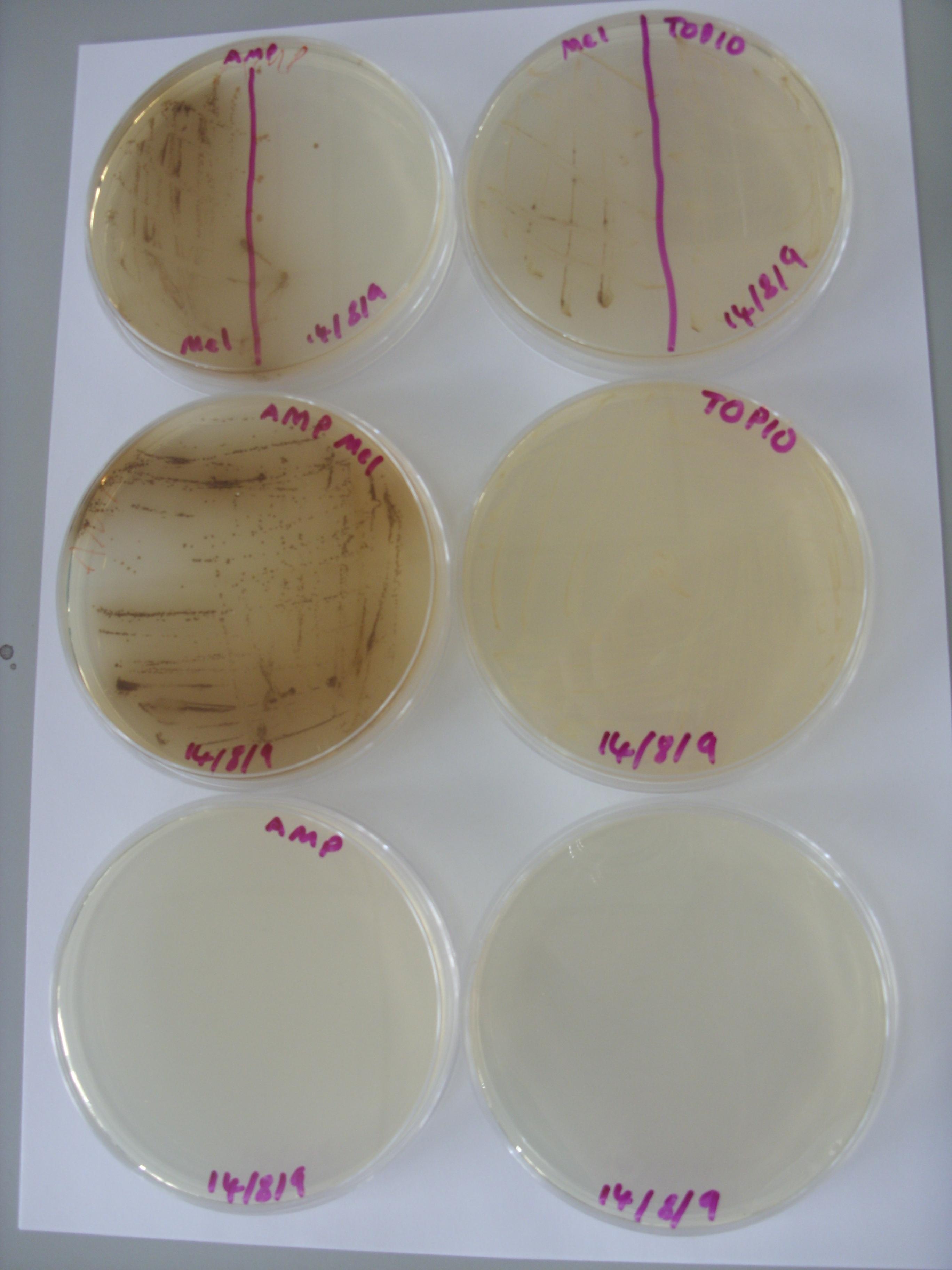Team:Cambridge/Notebook/Week6
From 2009.igem.org
Categories :
Project :
-
Overview
Sensitivity Tuner
--- Characterisation
--- Modelling
Colour Generators
--- Carotenoids (Orange/Red)
--- Melanin (Brown)
--- Violacein (Purple/Green)
The Future
Safety
Notebook :
Team Logistics :
Week 6
Monday
Dry Work
Modelling
On friday, the two models for a proposed threshold switching system were created. Model 6.2 (competition between activator and repressor for a site on the DNA) was investigated; For different 'arabinose' (or other proposed input) and repressor concentrations the final level of output from the system was plotted. It was hoped that for different input levels (shown in the below graphs by the different green lines of output) the position of switching to low output would take place at different repressor levels due to the competitive nature of the system. Investigation into refining the model will take place. It is important to remember that whilst total output is what is seen, plotting rates of output production is necessary; the 'switching level' could be considered to be the point at which the rate of output production becomes zero. A standard way of designing this switching level is required.
Rate of output production against time for a series of set repressor levels showed that different steady rates of production were rapidly obtained (figure 1 below). The final rate of production (representative of the steady state) was plotted against repressor level, showing that the 'switching level' would occur in the region where the rate falls to zero (figure 2). Ideally, our system would have a well defined switching point, with a much sharper rise to high rates of output. This would likely be achieved by increasing hill coefficients, requiring a system with a greater degree of cooperativity.
Figure 1
figure 2
Ideally, for each set repressor level, the output will have a non-zero rate of production at different levels of arabinose input. The most useful plot here is rate of output against input concentration, with different set repressor levels as different lines on the same graph. This is equivalent to the competitive inhibtion of enzyme action, a sample plot of such a case is given below (figure 3).
figure 3
The feasibility of such a system investigated, the question is how to implement such a system?
To continue the modelling work; models need to be refined according to data that begins to come from the plate reader. A return to looking at the latch in terms of rates of output production will possibly be useful, although no such clean switching level is expected to be possible. Also, the preliminary plate reader data shows a decrease in rate of GFP production having reached a peak value. A possible explanation is the large requirements the high rates place on transcription and translational machinery of the cell. The overall effect could be considered to be one of negative autoregulation with potential for oscillations about a steady level, damping as the system progresses through time. Finally, this week we also aim to look at stochastic simulation possibilities using StochSim.
Wet Work
Amplification
After succesful PCR of pSB3K3, did a double digest (PstI and XbaI) of pSB3K3 (vector) and the following inserts: I746390, I746391, I746392, I746394, I746395. Ligated vector and each insert, transformed into Top10.
Tuesday
Dry Work
Modelling
Thus far modelling has been rather preliminary. A systematic investigation of varying the parameters in a basic activator model is underway. There are nine parameters that can be changed relating to binding constants, hill coefficients and the rate of degradation of the activator protein.
Wet Work
Melanin pigment production
Examined the control plates made on Friday:
The picture clearly shows that the pigment production is due to the transformed cells, rather than conditions in the plate, or interactions between cell and the plate.
 "
"



